While many African safari destinations boast about the Big Five (lion, leopard, rhinoceros, elephant, and Cape buffalo), Uganda offers wildlife enthusiasts something distinctively different and perhaps even more extraordinary. Known as the “Pearl of Africa,” Uganda’s diverse ecosystems harbor some of the continent’s most remarkable and unique wildlife encounters. From intimate experiences with our closest primate relatives to rare avian species and distinctive predator behaviors, Uganda is a wildlife destination that transcends the typical safari checklist.
The Primate Paradise
Mountain Gorillas: A Soul-Stirring Encounter
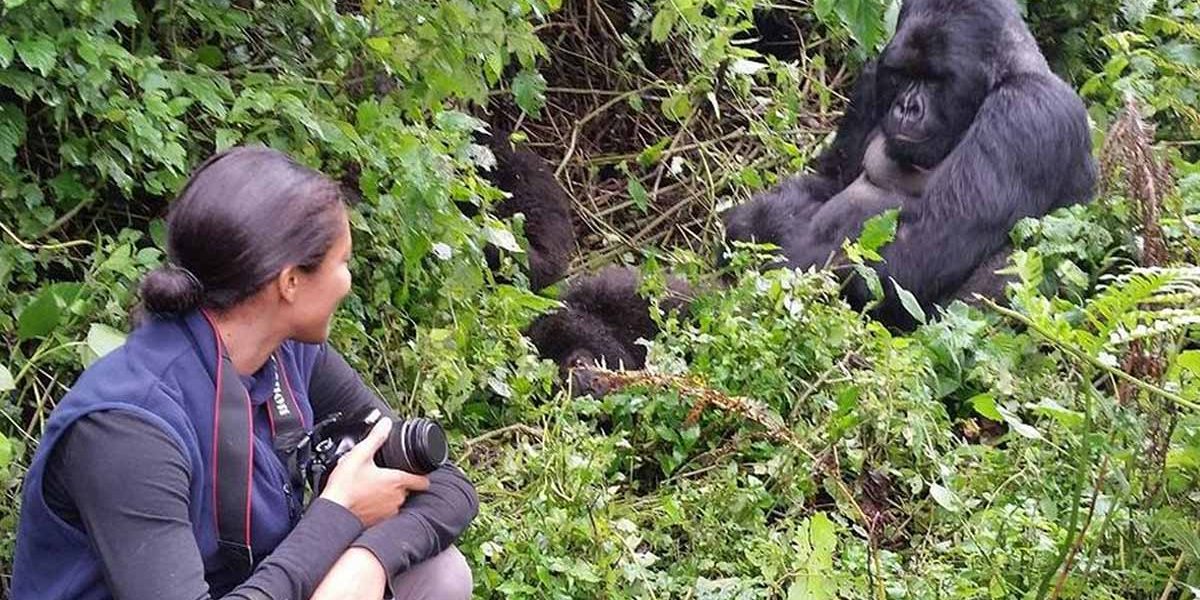
Uganda’s crown jewel wildlife experience is undoubtedly tracking mountain gorillas in their natural habitat. Approximately half of the world’s remaining mountain gorilla population resides in Uganda’s Bwindi Impenetrable National Park and Mgahinga Gorilla National Park, This represents one of conservation’s greatest success stories and tourism’s most profound wildlife encounters.
The experience of spending an hour with a gorilla family is transformative. Trekking through the misty, verdant forests to observe these gentle giants, with whom we share 98% of our DNA—as they interact, play, and nurture their young creates a connection that transcends typical wildlife viewing. Witnessing a silverback’s protective gaze or a juvenile’s playful antics offers a window into the complex social structures and emotional lives of these endangered creatures.
This carefully managed tourism activity directly funds conservation efforts, with gorilla numbers steadily increasing from just over 600 individuals in the 1990s to over 1,000 today across their range in Uganda, Rwanda, and the Democratic Republic of Congo.
Chimpanzee Tracking: Our Closest Relatives
![]() While gorillas may capture the imagination, chimpanzee tracking offers an equally captivating primate experience. Uganda’s Kibale National Park hosts one of Africa’s largest chimpanzee populations, with approximately 1,500 individuals. Unlike the relatively sedentary gorillas, chimpanzee tracking often involves following these highly active and vocal primates as they move through the forest canopy.
While gorillas may capture the imagination, chimpanzee tracking offers an equally captivating primate experience. Uganda’s Kibale National Park hosts one of Africa’s largest chimpanzee populations, with approximately 1,500 individuals. Unlike the relatively sedentary gorillas, chimpanzee tracking often involves following these highly active and vocal primates as they move through the forest canopy.
The chimps’ highly intelligent behavior—including tool use, complex social interactions, and coordinated hunting—provides visitors with fascinating insights into primate behavior. Kibale’s habituation process allows tourists to observe these behaviors safely without disrupting natural activities.
For the dedicated wildlife enthusiast, Kibale also offers a chimpanzee habituation experience, where visitors can spend a full day with researchers and a chimpanzee community that is being gradually habituated to human presence.
The Diverse Primate Portfolio
 Beyond these flagship species, Uganda hosts an impressive diversity of primates that few African destinations can match:
Beyond these flagship species, Uganda hosts an impressive diversity of primates that few African destinations can match:
- Golden monkeys in Mgahinga Gorilla National Park, with their distinctive golden-orange backs contrasting against black limbs
- Uganda mangabeys in Kibale Forest, a rare and endemic species
- Red-tailed monkeys, with their characteristic rust-colored tails and white nose spots
- Black-and-white colobus monkeys, remarkable for their acrobatic leaps and distinctive coloration
- Grey-cheeked mangabeys, known for their expressive facial features and complex vocalizations
- L’Hoest’s monkeys, recognizable by their distinctive white beards
This primate diversity offers enthusiasts the opportunity to observe vastly different evolutionary adaptations and social behaviors within a single destination.
Rare Avian Treasures
The Prehistoric Shoebill
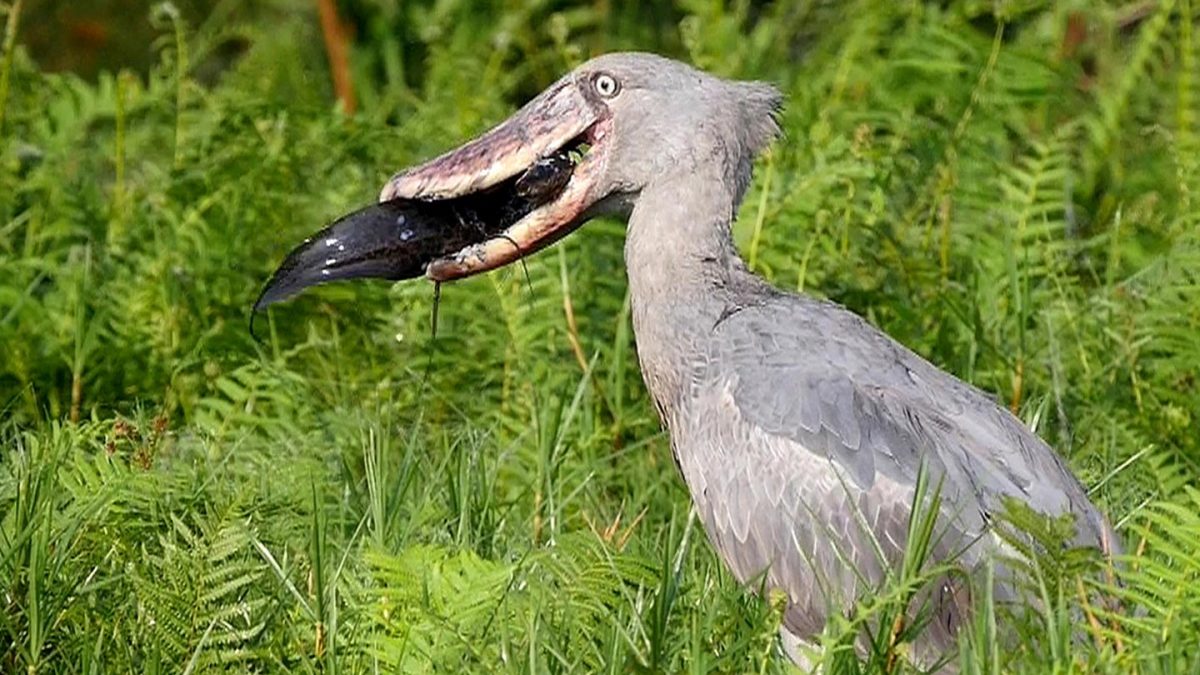 Few birds capture the imagination like the shoebill (Balaeniceps rex), a prehistoric-looking wading bird found in Uganda’s swamplands. Standing over four feet tall with its distinctive shoe-shaped bill, this solitary and patient hunter embodies the concept of “living dinosaur.”
Few birds capture the imagination like the shoebill (Balaeniceps rex), a prehistoric-looking wading bird found in Uganda’s swamplands. Standing over four feet tall with its distinctive shoe-shaped bill, this solitary and patient hunter embodies the concept of “living dinosaur.”
The Mabamba Swamp near Entebbe and the wetlands of Murchison Falls National Park offer some of the world’s best opportunities to observe these rare birds in their natural habitat. Gliding silently through papyrus channels in traditional canoes, visitors can witness these remarkable creatures as they stand statue-still before striking with lightning speed to catch lungfish and other prey.
The Albertine Rift Endemics
Uganda’s section of the Albertine Rift—a wildlife-rich region spanning several East African countries—harbors numerous endemic bird species found nowhere else on Earth. Bwindi Impenetrable Forest alone hosts over 23 Albertine Rift endemics, including:
- The striking Rwenzori turaco with its crimson wings and distinctive crest
- The elusive African green broadbill, one of Africa’s most sought-after bird species
- The strange weaver, known for its elaborate nest constructions
- The Grauer’s swamp warbler, a critically endangered species
For serious birders, these species represent some of the most coveted sightings on the continent.
A Birder’s Paradise
With over 1,000 bird species—roughly half of all birds recorded in Africa—Uganda ranks among the top birding destinations globally. This remarkable diversity exists in a country the size of Oregon, making it possible to record hundreds of species in a single well-planned trip.
From the papyrus gonolek in the wetlands to the great blue turaco in the forests and the standard-winged nightjar in the savannahs, Uganda offers exceptional birding year-round. Queen Elizabeth National Park alone hosts over 600 species, creating an environment where even casual wildlife enthusiasts find themselves developing a passion for ornithology.
Unique Predator Behaviors
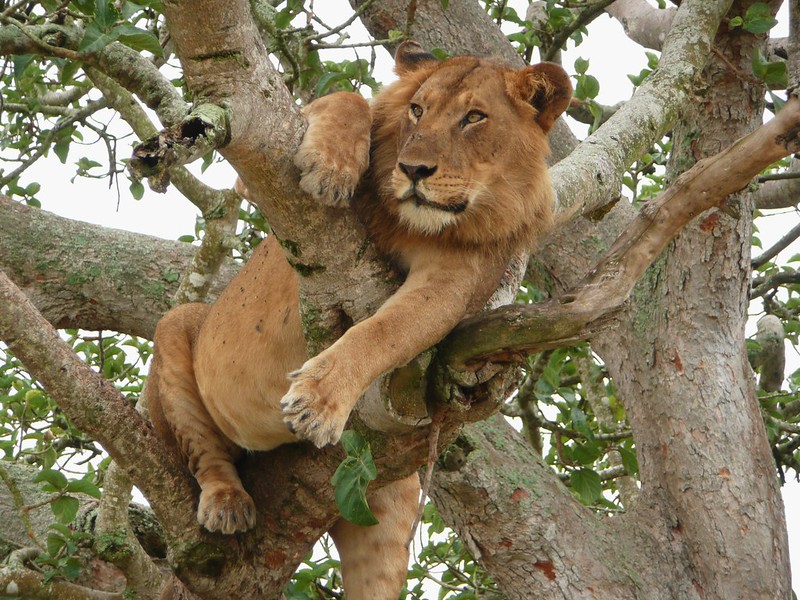 The Tree-Climbing Lions of Ishasha
The Tree-Climbing Lions of Ishasha
Perhaps the most photographed wildlife anomaly in Uganda is the tree-climbing lions of the Ishasha sector in Queen Elizabeth National Park. While lions can climb trees throughout Africa, the population in Ishasha has developed this behavior as a regular habit rather than an occasional curiosity.
These lions drape themselves across the branches of massive fig trees, sometimes spending the entire day elevated above the savannah floor. Theories suggest this behavior helps the lions escape the heat and biting flies at ground level, while also providing vantage points for hunting.
The sight of multiple lions lounging in a single tree, their tails dangling casually from the branches, creates an iconic wildlife image unique to Uganda.
Leopards of Semliki and Queen Elizabeth
While leopards are found throughout Africa, Uganda’s forests and savannahs offer some exceptional viewing opportunities of these normally elusive cats. The remote Semliki Wildlife Reserve hosts a population of leopards that has become increasingly observable, while in Queen Elizabeth National Park, these spotted predators sometimes display unusual behaviors like cooperative hunting—normally rare among these solitary cats.
Lesser-Known Treasures
Rothschild’s Giraffe
 The endangered Rothschild’s giraffe, with its distinctive coat pattern and lack of markings below the knees (appearing as if wearing white socks), finds sanctuary in Uganda’s Murchison Falls National Park and the newly established Lake Mburo National Park. With fewer than 2,000 individuals remaining in the wild, these giraffes represent an important conservation priority.
The endangered Rothschild’s giraffe, with its distinctive coat pattern and lack of markings below the knees (appearing as if wearing white socks), finds sanctuary in Uganda’s Murchison Falls National Park and the newly established Lake Mburo National Park. With fewer than 2,000 individuals remaining in the wild, these giraffes represent an important conservation priority.
Uganda Kob
The Uganda kob, a medium-sized antelope with distinctive lyre-shaped horns, serves as Uganda’s national animal and appears on its coat of arms. Beyond their cultural significance, kobs demonstrate fascinating breeding behaviors, establishing territoriality through “leks”—designated areas where males compete for mating rights through ritualized displays rather than direct combat.
Giant Forest Hogs
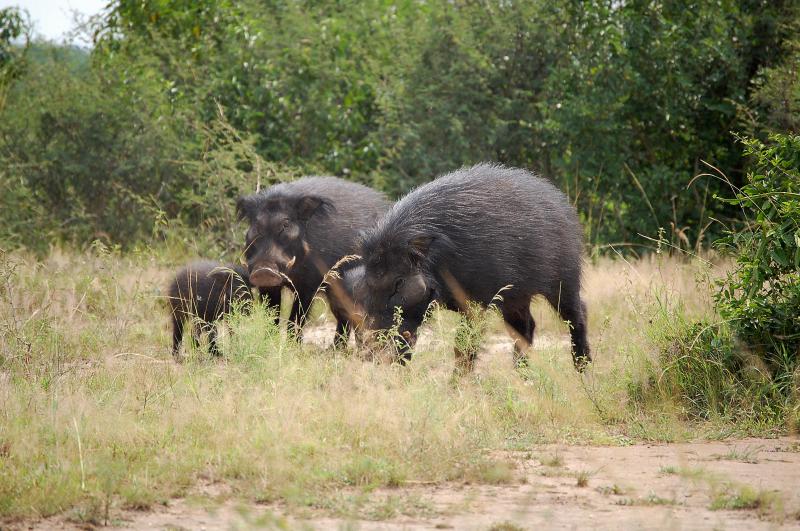 Africa’s largest wild pig species, the giant forest hog, reaches weights of up to 600 pounds. These impressive creatures roam Uganda’s forests and forest-savannah mosaics, particularly in Kibale National Park and parts of Queen Elizabeth National Park. Their size, distinctive facial wattles, and relatively limited range make them a special sighting for wildlife enthusiasts.
Africa’s largest wild pig species, the giant forest hog, reaches weights of up to 600 pounds. These impressive creatures roam Uganda’s forests and forest-savannah mosaics, particularly in Kibale National Park and parts of Queen Elizabeth National Park. Their size, distinctive facial wattles, and relatively limited range make them a special sighting for wildlife enthusiasts.
Conservation Success Stories
Rhino Reintroduction
After being poached to local extinction in the early 1980s, rhinos are making a comeback in Uganda through the dedicated efforts of the Ziwa Rhino Sanctuary. This 7,000-hectare protected area now hosts a growing population of southern white rhinos, offering visitors the opportunity to track these magnificent creatures on foot with experienced rangers.
While not yet fully reestablished in Uganda’s national parks, the sanctuary’s breeding program aims to eventually reintroduce rhinos to their former habitats across the country.
Nubian Giraffe Recovery
Through concentrated conservation efforts, Uganda has seen its population of the critically endangered Nubian giraffe (a subspecies of the Northern giraffe) increase substantially in recent years. Murchison Falls National Park now hosts approximately 1,550 individuals, representing three-quarters of the world’s remaining wild population of this subspecies.
Experiencing Uganda’s Wildlife Diversity
What makes Uganda’s wildlife encounters truly special is the diversity accessible within relatively short distances. A well-planned two-week itinerary can include gorilla tracking in misty montane forests, chimpanzee encounters in lush rainforests, tree-climbing lions in acacia-studded savannahs, and shoebill sightings in expansive wetlands.
This ecological diversity means that wildlife enthusiasts experience not just different species but entirely different ecosystems and habitats, each with its own atmosphere, challenges, and rewards.
Responsible Wildlife Tourism
Uganda’s commitment to sustainable wildlife tourism is evident in its carefully managed gorilla and chimpanzee tracking protocols, which limit visitor numbers and maintain safe distances to protect both animals and humans. The Uganda Wildlife Authority reinvests tourism revenue directly into conservation efforts and community development projects, creating a virtuous cycle that protects wildlife while benefiting local populations.
By choosing Uganda for wildlife encounters, visitors directly contribute to conservation success stories while experiencing natural wonders that transcend the conventional safari checklist. Beyond the Big Five lies a world of unique wildlife experiences that connect visitors to our primate heritage, showcase evolutionary marvels, and demonstrate nature’s boundless capacity for adaptation and resilience.
In Uganda, it’s not about checking species off a list—it’s about immersive encounters that transform our understanding of the natural world and our place within it. You can book a wildlife safari in Uganda with us for a chance to encounter these amazing animals in the wild by simply contacting us via info@ugandasafarbookings.com or calling +256-700135510 to speak wth the reservations team.
Bryan Muhoozi
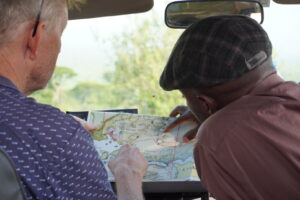
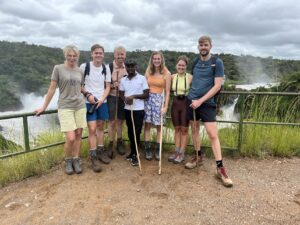
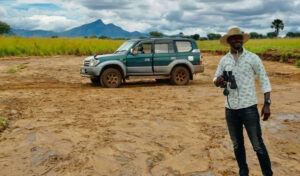
More Articles
Renting a Car in Uganda: The Essential Guide
Untamed Beauty: Safari Uganda with Expert Local Guides
What Makes A Safari Van The Ideal 4×4 For Safaris In Uganda